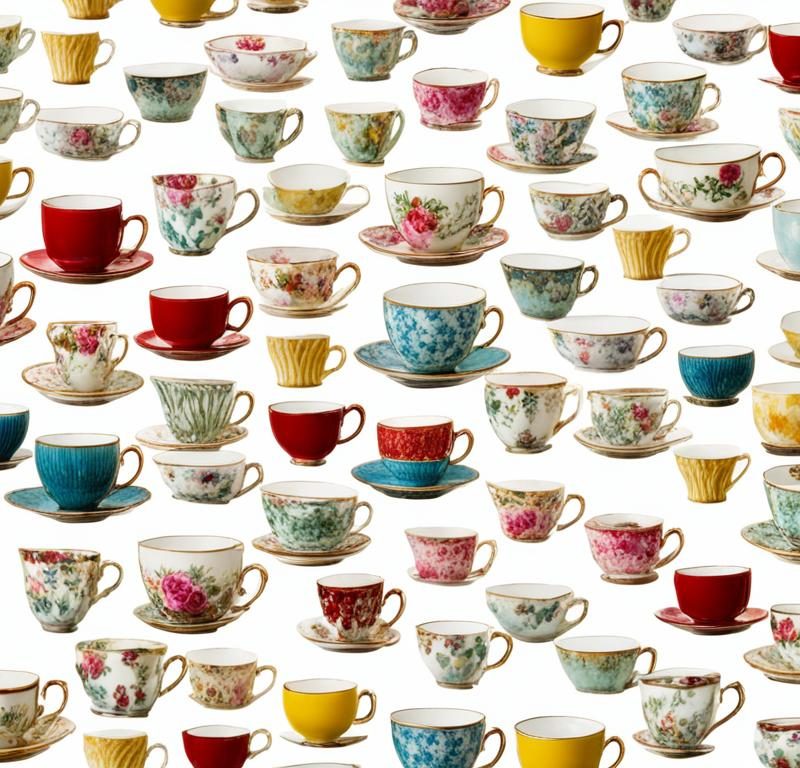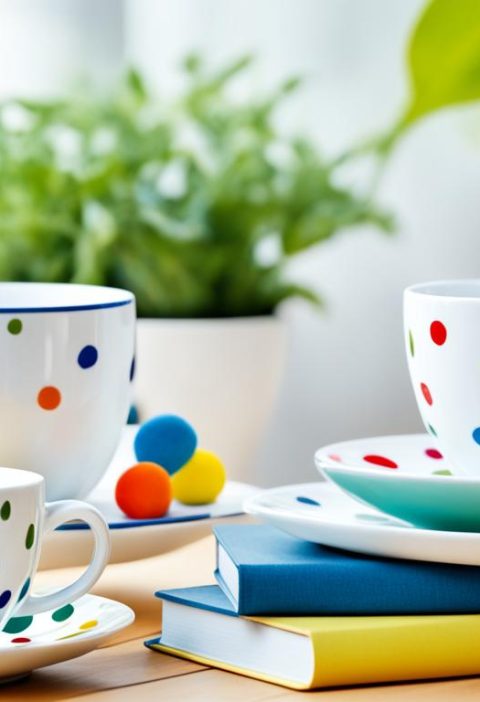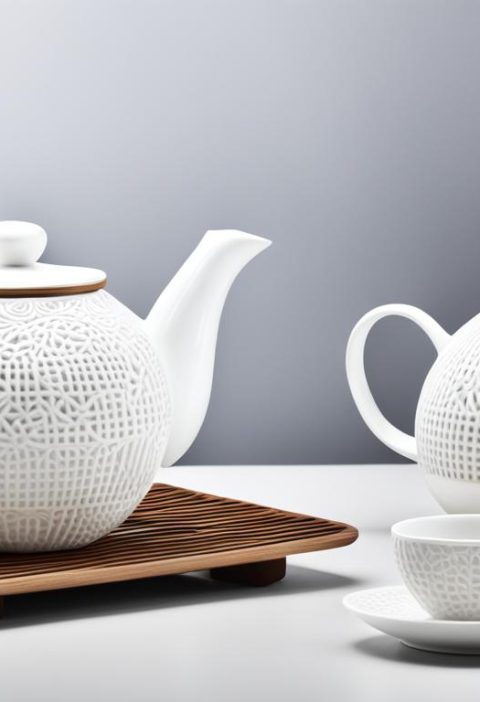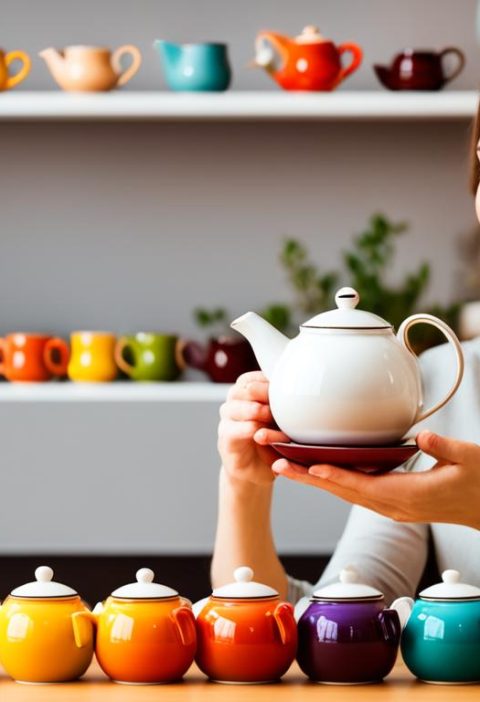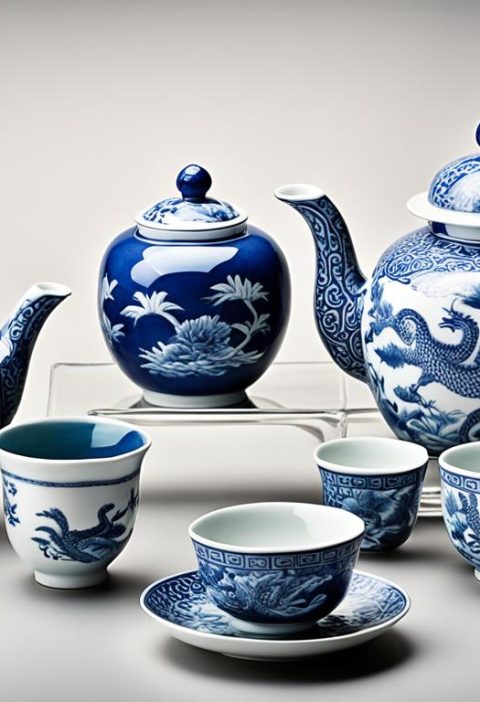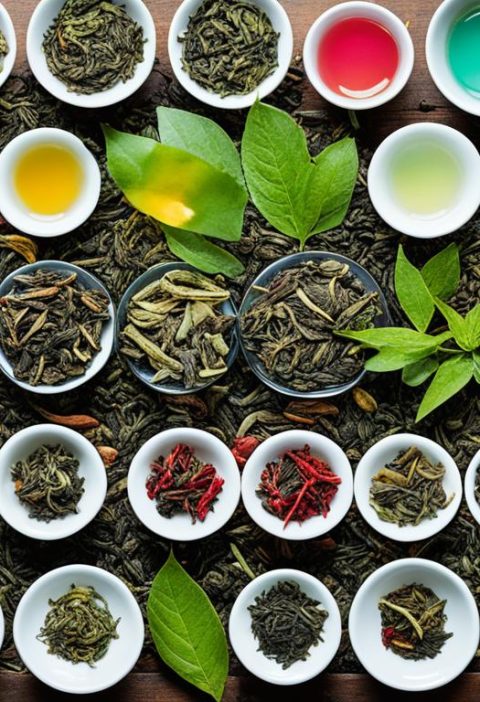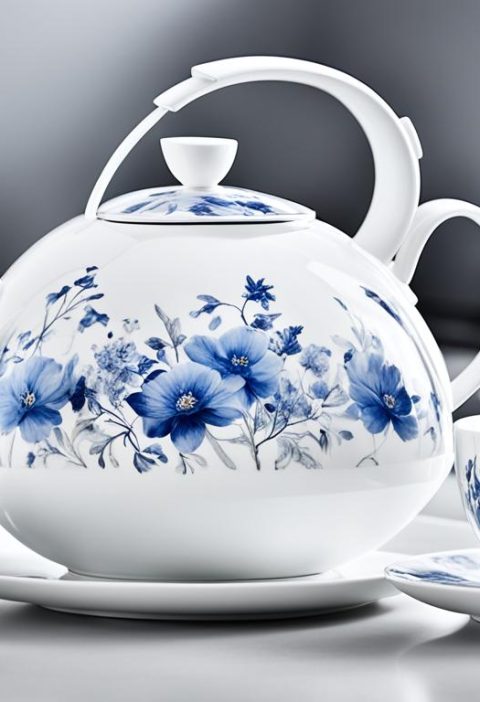A tea set or tea service typically includes a collection of matching teaware and utensils used in the preparation and serving of tea. The number of teacups included in a full set can vary depending on cultural traditions and customs.
Key Takeaways:
- The number of teacups in a full set can vary depending on cultural traditions and customs.
- In Chinese tea culture, it is common to see only three teacups on the tea table, symbolizing the three guests that should ideally be present during a tea ceremony or gathering.
- The size and style of the teacup set can vary, ranging from two to six or more teacups.
- Teacup set sizes can also vary depending on the purpose and occasion.
- The size of a teacup set is ultimately a personal choice and can vary widely.
Tea sets originated in ancient China and have evolved over time to include various components such as a teapot, teacups, sugar bowl, creamer, and tea bowls. The number of teacups in a set can be influenced by cultural symbolism and personal preferences. While Chinese tea culture often includes three teacups to create a balanced and harmonious environment, other sets may have different quantities. Ultimately, the size and composition of a teacup set vary, providing options for different tea-drinking traditions and occasions.
Historical Origins of Tea Sets
The history of tea sets can be traced back to ancient China, where tea ware made of porcelain was used in the preparation and serving of tea. During the Han dynasty, tea sets consisted of two styles of porcelain bowls for holding spiced or plain tea leaves.
The teapot, a key component of a tea set, is believed to have been developed during the Song dynasty. Yixing teapots, famous for their unique coloration and porous clay, were used to steep specific types of oolong teas.
European tea sets started to appear in the 18th century and were initially imported as individual pieces that were assembled into sets. The Sèvres porcelain factory played a significant role in the mass production of tea sets in the 18th and 19th centuries.
The Development of Tea Sets in Ancient China
Tea sets have a rich history in ancient China. During the Han dynasty, tea bowls were used to hold spiced or plain tea leaves. These porcelain bowls were often ornately decorated and varied in design. As tea drinking became more popular, the evolution of tea sets led to the development of the teapot during the Song dynasty. Yixing teapots, made from porous clay and known for their exceptional coloration, emerged as a popular choice for steeping and serving tea.
The Introduction of European Tea Sets
In the 18th century, European tea sets began to gain popularity. Initially, these sets were imported as individual pieces and assembled into complete sets. The Sèvres porcelain factory in France played a pivotal role in the mass production of exquisite tea sets during the 18th and 19th centuries. These sets featured intricate designs and were highly sought after by the elite.
Continued Evolution
Over time, tea set designs and components have continued to evolve. From traditional Chinese tea sets to European-inspired designs, tea sets have become a reflection of cultural influences and personal style. Whether made from porcelain, clay, or other materials, tea sets hold a special place in tea culture, with each set telling its own unique story.
Traditional Tea Set Components
A traditional tea set is comprised of several essential components that come together to create a complete tea serving experience. These components include:
1. Teapot
The teapot is the centerpiece of the tea set, responsible for steeping and serving the tea. It comes in various sizes, shapes, and designs. From classic porcelain to elegant ceramics, the teapot embodies the artistry and craftsmanship of tea culture.
2. Teacups
Teacups are an integral part of the tea set, providing vessels for sipping and enjoying the brewed tea. These cups are often designed to complement the teapot and may feature intricate patterns or motifs. Whether delicate or sturdy, the teacups enhance the aesthetics of the tea-drinking experience.
3. Sugar Bowl
For those who prefer to add sweetness to their tea, a sugar bowl is a common accessory in tea sets. It offers a designated space for storing sugar cubes or other sweeteners, making it convenient to enhance the flavor of the tea to one’s individual preference.
4. Creamer
When milk or cream is desired in tea, a creamer is used to hold and pour the dairy product. It allows for controlled and precise measurements to achieve the desired balance of tea and milk. The creamer adds a touch of indulgence to the tea ritual.
5. Tea Bowls
In some tea cultures, such as China, tea bowls are part of the traditional tea set. Tea bowls provide a more hands-on and immersive tea-drinking experience. They are often used for practicing mindfulness and appreciating the aroma, flavor, and temperature of the tea.
These components work harmoniously together, creating an enchanting tea-drinking experience that celebrates the artistry, tradition, and cultural significance of tea.
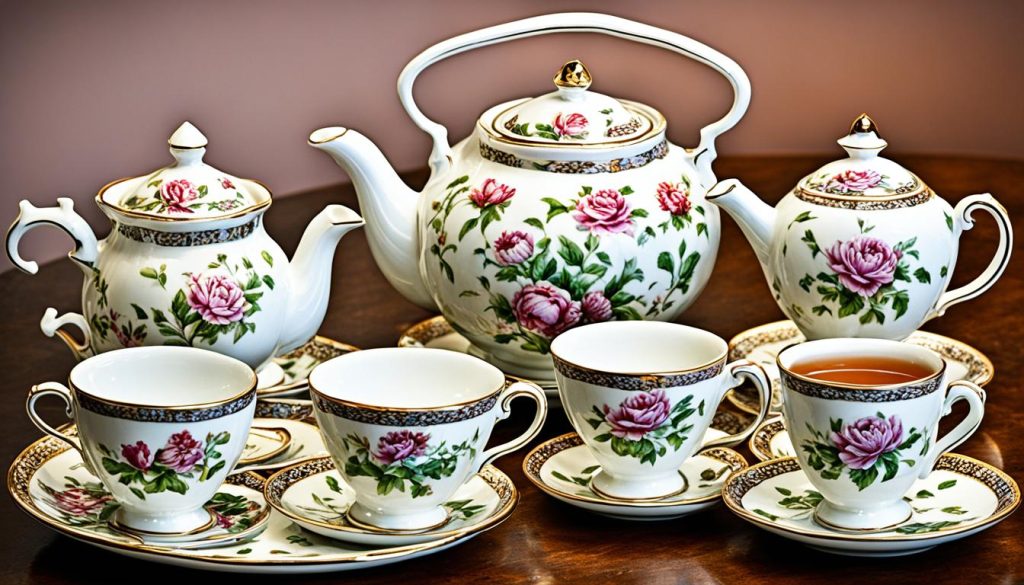
Variations in Teacup Set Sizes
Teacup set sizes can vary depending on cultural traditions and personal preferences. While three teacups may be common in Chinese tea culture, other sets may include two, four, or more teacups. The size of a teacup set can also depend on the purpose and occasion. For example, tea sets designed for individual use may only include one or two teacups, while larger sets intended for hosting or gifting purposes may include a larger number of teacups, ranging from four to ten or more.
How many teacups are typically included in a standard teacup set?
The standard teacup set may include a varying number of teacups. In Chinese tea culture, three teacups are often used, representing the ideal number of guests for a harmonious tea ceremony. However, teacup sets from other cultures can have different standard counts, such as two, four, or more teacups. The size of a standard teacup set is influenced by cultural traditions and personal preferences.
What is the average teacup collection size in a teacup set?
The average teacup collection size in a teacup set can vary depending on the purpose and occasion. For individual use, a teacup set may only include one or two teacups. However, teacup sets designed for hosting or gifting purposes may have a larger collection size, ranging from four to ten or more teacups. The average teacup collection size is determined by personal preferences and the intention behind using the teacup set.
Is there a standard count for teacups in a teacup set?
There is no fixed standard count for teacups in a teacup set as it can vary across different cultures and traditions. While some sets may follow a convention of including a specific number of teacups, such as three in Chinese tea culture, others may have different standard counts, such as two, four, or more teacups. The count of teacups in a teacup set is influenced by cultural norms and individual preferences.
| Teacup Set Sizes | Description |
|---|---|
| Small Teacup Set | A teacup set designed for individual use, typically consisting of one or two teacups. |
| Medium Teacup Set | A teacup set suitable for small gatherings or personal enjoyment, usually including three to six teacups. |
| Large Teacup Set | A teacup set intended for hosting tea parties or gift giving, often featuring a collection of six or more teacups. |
When selecting a teacup set, consider the number of teacups that best suits your needs and the occasions on which you plan to use them. Whether you prefer a small set for personal use or a large set for entertaining guests, there are teacup collections available to fulfill your preferences.
Conclusion
In conclusion, the size of a teacup set is not set in stone. It can vary greatly depending on cultural traditions, personal preferences, and the intended use. While three teacups are commonly found in traditional Chinese tea sets, other sets may contain two, four, or even more teacups. The choice ultimately lies with the individual and their unique needs.
Furthermore, the history of tea sets can be traced back to ancient China, where porcelain tea ware was used for the preparation and serving of tea. These sets typically consist of components such as a teapot, teacups, sugar bowl, creamer, and tea bowls, each serving a specific purpose in the tea-drinking experience.
When selecting a teacup set, it’s important to consider your own preferences and requirements. Whether you’re an avid tea enthusiast or a casual tea drinker, there is a teacup set size that suits your needs. Whether you prefer an intimate gathering with a few teacups or a larger set to entertain guests, the choice is yours. Embrace the diversity and beauty of teacup sets, and let your personal taste guide you in finding the perfect set size.
